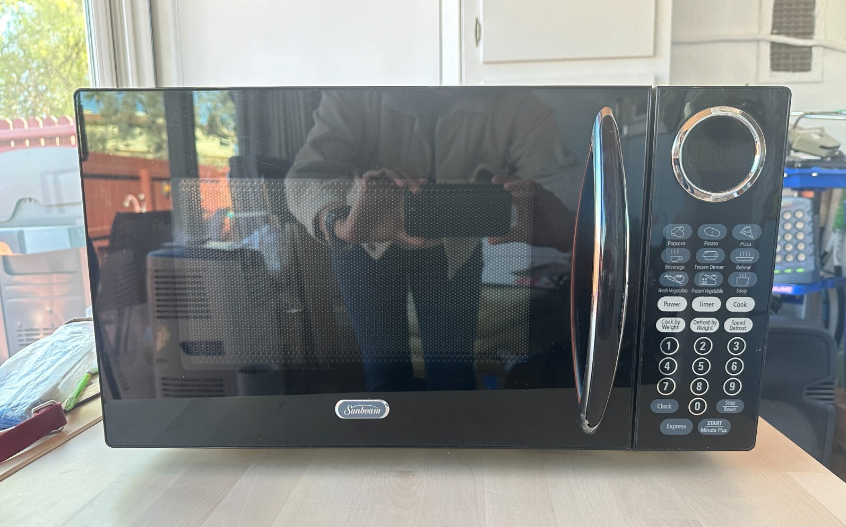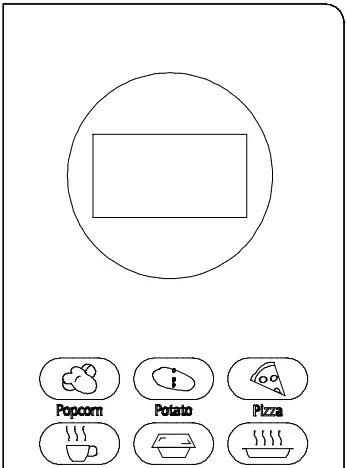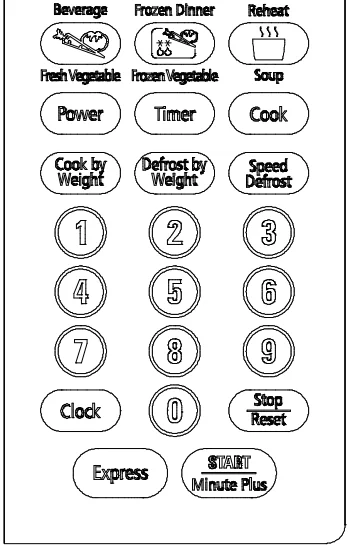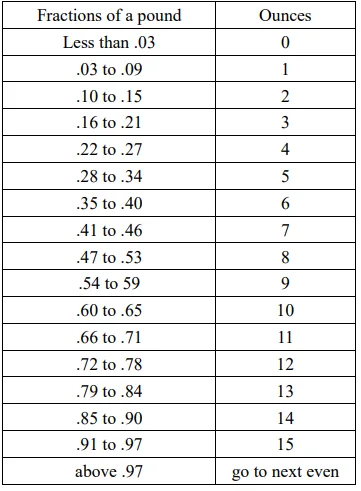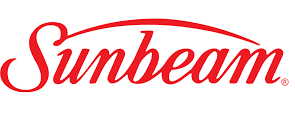
Sunbeam SGB8901 Microwave Oven
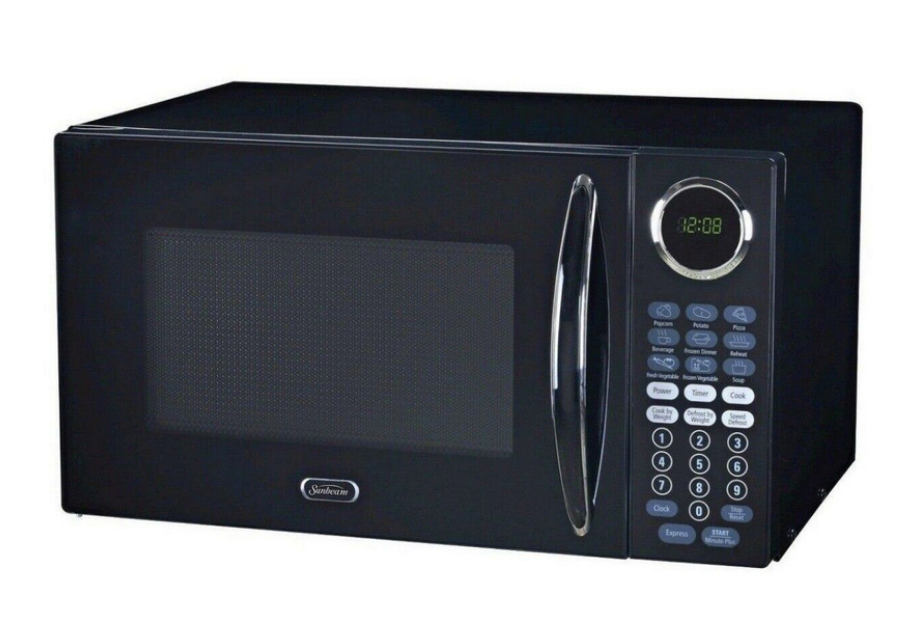
INSTALLATION GUIDE
- Make sure all packing materials are removed from the inside of the microwave oven door.
- Check the microwave oven for any damage, such as misaligned or bent door, damaged door seals and sealing surface, broken or loose door hinges and latches, and dents inside the cavity or on the door. If there are any damages, do not operate the oven but contact Customer Service at 1-866-257-3336.
- This microwave oven must be placed on a flat, stable surface to hold its weight and the heaviest food likely to be cooked in the oven.
- Do not place the oven where heat, moisture, or high humidity are generated, or near combustible materials.
- For correct operation, the oven must have sufficient airflow. Allow 8″ of space above the microwave oven, 4″ at the back, and 2″ on each side of the unit.
- Do not cover or block any openings on the microwave oven. Do not remove microwave oven feet. Do not operate the oven without the glass tray, roller support, and shaft in their proper positions. Make sure the power supply cord is undamaged and does not run under the microwave or over any hot or sharp surface.
- The socket must be readily accessible so the microwave oven can be easily unplugged in an emergency.
GROUNDING INSTRUCTIONS
This microwave oven must be grounded. In the event of an electrical short circuit, grounding reduces the risk of electric shock by providing an escape wire for the electric current. Consult a qualified electrician or serviceman if the grounding instructions are not completely understood, or if doubt exists as to whether the appliance is properly grounded.
For questions regarding the grounding instructions, please contact our Customer Support Center at 1-866-257-3336. Consult a qualified electrician or serviceman if the grounding instructions are not completely understood, or if doubt exists as to whether the appliance is properly grounded, and either:
- If it is necessary to use an extension cord, use only a 3-wire extension cord that has a 3-blade grounding plug and a 3-slot receptacle that will accept the plug on the appliance. The marked rating of the extension cord shall be equal to or greater than the electrical rating of the appliance, or 2) Do not use an extension cord. If the power supply cord is too short, have a qualified electrician or serviceman install an outlet near the appliance.
WARNING: Improper use of the grounding plug can result in the risk of electric shock.
ELECTRICAL REQUIREMENTS
- The electrical requirements for this microwave oven are a 120V, 60Hz, AC only, 20 amp.
- It is recommended that a separate circuit serving only the microwave be provided.
- The microwave oven is equipped with a 3-prong grounding plug. It must be plugged into a wall outlet properly installed and grounded wall outlet.
POWER CORD
- A short power supply cord is provided to reduce the risks resulting from becoming entangled in or tripping over a long cord.
- Longer cord sets or extension cords are available and may be used if care is taken in using them.
- If using a longer cord, the marked electrical rating of the cord set or extension cord should be at least as great as the electrical marking of the microwave itself, and the extension cord must be a grounded-type 3-wire cord. The longer cord should be arranged so it will not drape over the counter or tabletop, where it can be pulled on by children or tripped over unintentionally.
RADIO OR TV INTERFERENCE
- Should there be any interference caused by the microwave oven to your radio or TV, check that the microwave oven is on a different circuit, relocate the radio or TV as far away from the oven as feasible, or check the position and signal of the receiving antenna.
PRODUCT DIAGRAM
- Door Safety Lock System
- Oven Window
- Shaft
- Roller Ring
- Control Panel
- Spatter Shield (Do not remove)
- Glass Tray

CONTROL PANEL
- DISPLAY: Cooking time, power, indicators, and present time are displayed.
- QUICK COOK BUTTONS: Instant settings to cook popular foods.
- POWER: Use to set the power level. To check the power level during cooking, touch the POWER pad.
- TIMER: The timer functions independently, even while a cooking program is in process.
- COOK: Use for multi-stage cooking. Enables cooking at multiple power and time settings automatically.
- COOK BY WEIGHT: Programmed cooking based on the weight of foods cooked.
- DEFROST BY WEIGHT: Programmed defrosting based on the weight of the foods to be defrosted.
- SPEED DEFROST: Quick defrost function that alternates defrost and stand times to quickly and effectively defrost foods.
- NUMBER PADS (0-9): Touch to input time or food weight.
- CLOCK: Set the current time.
- STOP/RESET: Press to cancel the setting or reset the oven before setting a cooking program.
- EXPRESS: Use this feature to program the oven to microwave food at 100% power conveniently.
- START/MINUTE PLUS: Touch to start cooking or to add an extra minute to your cooking cycle.


INSTALLING THE TURNTABLE
- Never place the glass tray upside down.
- The glass tray should never be restricted.
- Both the glass tray and the turntable ring assembly must always be used during cooking.
- All food and containers of food should always be placed on the glass tray for cooking.
- If the glass tray or turntable ring assembly cracks or breaks, call customer service at 1-866-257-3336.
OPERATION INSTRUCTIONS
SETTING THE CLOCK
- In waiting mode, touch the CLOCK pad.
- Use the number pads to enter the correct time.
- Touch the CLOCK pad again.
NOTE: This is a 12-hour clock. When the oven is first plugged in or when power resumes after a power interruption, the display will show ENTER CLOCK TIME. During cooking, you can press CLOCK to check the oven time.
SETTING THE TIMER
- Touch TIMER.
- Enter the amount of time by touching the number pads.
- Touch START/MINUTE PLUS.
NOTE:
- The time countdown can be seen in the display before the clock or cooking time is returned to display.
- Touch TIMER and then touch STOP/RESET to cancel the TIMER during the timing process.
- The longest cooking time you can set is 99 minutes and 99 seconds.
MICROWAVE COOKING
A. One-stage Cooking
- In waiting mode, place food into the oven and close it.
- Use the number pads to set a cooking time. You can set a cooking time from one second to 99 minutes and 99 seconds.
- If you want to set a power level other than 100% power, touch POWER, and then use the number pads to enter the power level.
- Touch START/MINUTE PLUS to start cooking.
Use single digits to set a cooking power level:
NOTE: During cooking, you can press POWER to check the cooking power.
B. Two-stage Cooking
Some recipes require different stages of cooking at different temperatures.
- SET STAGE 1: Follow steps 1 and 2 in “One-stage Cooking”. DO NOT TOUCH START/MINUTE PLUS.
- SET STAGE 2: Touch COOK, then enter proper cooking time and (lower) power level. (Most 2-stage recipes use lower power for the second stage.)
- Touch START/MINUTE PLUS.
NOTE: Speed defrost can only be set in the first stage, auto menu, cook by weight, defrost by weight cannot be set in this program.
SPEED DEFROST
- In waiting mode, place food into the oven and close it.
- Touch SPEED DEFROST.
- Enter the desired defrosting time by touching the correct number pads.
- Touch START/MINUTE PLUS.
NOTE:
- The longest defrosting time is 99 min, 99 sec.
- During cooking, the oven will pause to remind you to turn food over, then close the door and press START/MINUTE PLUS to resume.
COOK BY WEIGHT
- In waiting mode, place food into the oven and close it.
- Touch COOK BY WEIGHT.
- Enter the one-digit code by touching the correct number pad (1~3).
- Enter weight by pressing the number pads.
- Touch START/MINUTE PLUS.
Cook By Weight Code Description
NOTE:
- Meat must be defrosted and kept at a refrigerated temperature.
- Weight must be in pounds and ounces.
- Ounce weights less than 10 must be preceded by a 0. If the label gives weight in pounds only, change the fraction of a pound to ounces using the following chart.
Converting Fractions of a Pound to Ounces
- During cooking, the system will pause automatically and sound to remind the user to turn food over, after that touch START/MINUTE PLUS to resume cooking.
- Let the meat stand a few minutes before carving.

EXPRESS
- In waiting mode, place food into the oven and close it.
- Press the EXPRESS several times to enter the cooking time. Then the system will operate automatically with full power.
Note: During cooking, you can add the cooking time, and the maximum is 10 minutes.
DEFROST BY WEIGHT
- In waiting mode, place food into the oven and close it.
- Touch DEFROST BY WEIGHT pad.
- Enter weight by touching the number pads.
- Touch START/MINUTE PLUS pad.
NOTE:
- Weight must be in pounds and ounces. Ounce weights less than 10 must be preceded by a 0. If the label gives weight in pounds only, change the fraction of a pound to ounces using the chart given above. The maximum weight is 5 lb.4 oz.
- Turn over food when the oven beeps. Touch START/MINUTE PLUS pad to resume defrosting.
SETTING CHILD LOCK
- The safety lock prevents unsupervised operation by children. The CHILD LOCK indicator will show up on the display screen, and the oven cannot be operated while the CHILD LOCK is set.
- To set, in standby mode, press and hold STOP/RESET for 3 seconds. LOCK is indicated on the display.
- To cancel, press and hold STOP/RESET for 3 seconds. LOCK indication disappears.
COOKING UTENSILS GUIDE
This section lists which utensils can be used in this microwave, which have limited use for short periods, and which should not be used in this microwave.
RECOMMENDED
- Microwave browning dish — Use to brown the exterior of small items such as steaks, chops, or pancakes. Follow the Directions provided with your Browning dish.
- Microwaveable plastic wrap — Use to retain steam. Leave a small opening for some steam to escape, and avoid placing it directly on the food.
- Paper towels and napkins — Use for short-term heating and covering; these absorb excess moisture and prevent splattering. Do not use recycled paper towels, which may contain metal and could ignite.
- Glass and glass-ceramic bowls and dishes — Use for heating and cooking.
- Paper plates and cups — Use for short-term heating at low temperatures. Do not use recycled paper, which may contain metal and could ignite.
- Wax paper — Use as a cover to prevent splattering.
- Thermometers — Use only those labeled “Microwave Safe” and follow all directions. Check the food in several places. Conventional thermometers may be used on microwaved food once the food has been removed from the microwave
LIMITED USE
- Aluminum foil: Use narrow strips of foil to prevent overcooking exposed areas. Using too much foil can damage your microwave, so be careful. Keep 1″ between foil and microwave cavity.
- Ceramic, porcelain, and stoneware — Use these if they are labeled “Microwave Safe”. If they are not labeled, test them to make sure they can be used safely.
- Plastic — Only use if labeled “Microwave Safe”. Other plastics may melt.
NOT RECOMMENDED
- Glass jars and bottles — Regular glass is too thin to be used in a microwave. It can shatter and cause damage and injury.
- Paper bags — These are a fire hazard, except for popcorn bags that are designed for microwave use.
- Styrofoam plates and cups — These can melt and leave unhealthy residue on food.
- Plastic storage and food containers — Containers such as margarine tubs can melt in the microwave.
- Metal utensils — These can damage your microwave. Remove all metal before cooking.
Note: Should you wish to check if a dish is safe for microwaving, place the empty dish in the microwave and microwave on high for 30 seconds. A dish that becomes very hot should not be used.
COOKING TECHNIQUES
Your microwave makes cooking easier than conventional cooking, provided you keep these considerations in mind:
STIRRING
- Stir foods such as casseroles and vegetables while cooking to distribute heat evenly.
- Food on the outside of the dish absorbs more energy and heats quickly, so stir from the outside to the center.
- The microwave will turn off when you open the door to stir your food.
ARRANGEMENT
- Arrange evenly shaped foods, such as chicken pieces or chops, with the thicker, meatier parts towards the outside of the turntable, where they receive more microwave energy.
- To prevent overcooking, place delicate areas, such as asparagus tips, towards the center of the turntable.
SHIELDING
- Shield food with narrow strips of aluminum foil to prevent overcooking.
- Areas that need shielding include poultry wing tips, the ends of poultry legs, and the corners of square baking dishes.
- Use only small amounts of aluminum foil, as larger amounts may damage your microwave.
TURNING
- Turn foods over midway through cooking to expose all parts to microwave energy.
- This is especially important when cooking large foods such as roasts.
STANDING
- Foods cooked in a microwave build up internal heat and continue to cook for a few minutes after the heating stops.
- Let foods stand to complete cooking, especially for foods such as cakes and whole vegetables.
- Roasts need this time to complete cooking in the center without overcooking the outer areas.
- All liquids, such as soup or hot chocolate, should be shaken or stirred when cooking is complete.
- When heating baby food, stir well after removing from the microwave and test the temperature before serving.
ADDING MOISTURE
Microwave energy is attracted to water molecules.
- Food that is uneven in moisture content should be covered or allowed to stand so that the heat disperses evenly.
- Add a small amount of water to dry food to help it cook.
CLEANING AND CARE
- Turn off the microwave and unplug the power cord from the wall when cleaning.
- Keep the inside of the microwave oven clean. When food splatters or spilled liquids adhere to microwave walls, wipe with a damp cloth. Mild detergents may be used if the microwave gets very dirty. Avoid using spray or other harsh cleaners. They may stain, streak, or dull the door surface.
- The outside of the microwave should be cleaned with a damp cloth. To prevent damage to the operating parts inside the microwave, water should not be allowed to seep into the ventilation openings.
- Wipe the window on both sides with a damp cloth to remove any spills or splatters.
- Do not allow the control panel to become wet. Clean with a soft, damp cloth. When cleaning the panel, leave the microwave door open to prevent it from accidentally turning on.
- If steam accumulates inside or around the outside of the door, wipe with a soft cloth. This may occur when the microwave is operated under high humidity. In such a case, it is normal.
- It may be necessary to remove the glass tray for cleaning. Wash the tray in warm, soapy water or in a dishwasher. The roller ring and microwave floor should be cleaned regularly to avoid excessive noise. Wipe the bottom surface of the microwave with a mild detergent.
- The roller ring may be washed in mild, soapy water or in a dishwasher. When removing the roller ring, be sure to replace it in the proper position.
- Remove odors from your microwave by combining a cup of water with the juice and skin of one lemon in a microwaveable bowl. Microwave for 5 minutes. Wipe thoroughly and dry with a soft cloth.
- If the light bulb burns out, please contact customer service (1-866-257-3336) to have it replaced.
- The microwave should be cleaned regularly, and any food deposits should be removed. Failure to maintain the microwave in a clean condition could lead to deterioration of surfaces that could adversely affect the life of the unit and could result in a hazardous situation.
- Please do not dispose of this appliance in a regular garbage receptacle. Please check to see where you can dispose of such appliances.
BEFORE CALLING FOR SERVICE
Before asking for service, please check each item below:
- Check to ensure the microwave is plugged in securely. If not, remove the plug from the outlet, wait 10 seconds, and plug it in again securely.
- Check for a blown circuit fuse or a tripped main circuit breaker. If these seem to be operating properly, test the outlet with another appliance.
- Check to ensure the control panel is programmed correctly and the timer is set.
- Check to ensure the door is securely closed, engaging the door safety lock system. If the door is not properly closed, the microwave energy will not flow inside.
SPECIFICATIONS

For More Manuals By Sunbeam, Visit ManualsLibraryy.
Sunbeam SGB8901 Microwave Oven-FAQs
Why is my Sunbeam microwave running but not heating?
If your Sunbeam microwave runs but doesn’t heat, the magnetron may be faulty. Other possible causes include a damaged high-voltage diode, capacitor, door switch, or a blown thermal fuse. Always unplug the appliance before inspection or servicing.
How can I reset my Sunbeam microwave?
To reset, unplug the microwave from the power source and wait for about 5 minutes. Then plug it back in. Some models also have a “Reset” or “Clear” button on the control panel that you can press and hold to restore default settings.
How do I fix my Sunbeam microwave if it’s not heating?
Start by checking that the power cord is plugged in properly and the door closes fully. If that’s fine, inspect for any error codes on the display. For internal issues such as a faulty magnetron or capacitor, contact a qualified technician.
Can a blown fuse cause my Sunbeam microwave to stop heating?
Yes. A blown fuse can interrupt the microwave’s power supply, causing it to run without producing heat. If accessible, check and replace the fuse, or have a technician do it safely.
What is the most common problem with microwaves?
The most frequent issue is the unit not heating due to a faulty magnetron or door switch. Other common problems include a loose power cord, blown fuse, or display/control panel malfunctions.
What is the most expensive part of a microwave to replace?
The magnetron and transformer are typically the most costly components. Replacing a magnetron usually costs between $100 and $200, depending on your model.
Is it worth repairing a microwave?
If it’s a minor issue (like a fuse or switch), repair is cost-effective. But if the magnetron or control board fails, the cost may approach that of a new unit, making replacement the better choice.
Can I repair my Sunbeam microwave myself?
It’s not recommended to repair a microwave yourself due to the high-voltage components that can cause electric shock, even when unplugged. Always consult a professional technician.
What’s the main cause of magnetron failure?
Most magnetron failures occur due to age, overheating, or power surges. Poor ventilation and running the microwave empty can also shorten its lifespan.

